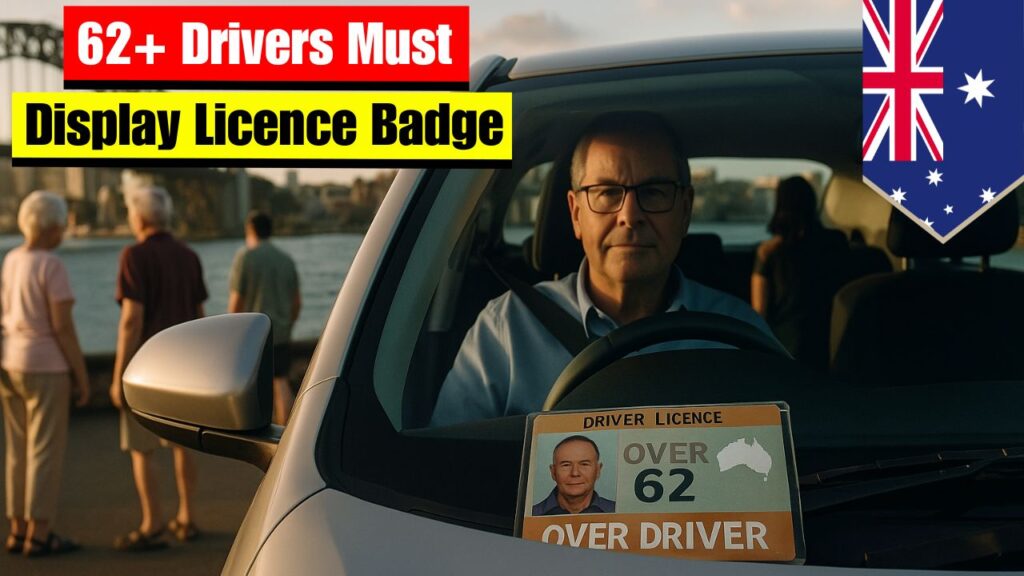Australia has introduced a major change to its driving regulations in 2025, requiring all drivers over 62 years old to display a specific licence badge while driving. This update aims to improve road safety, ensure better driver identification, and assist authorities in quick verification. While the new rule applies to most senior motorists, the government has also outlined a list of important exceptions for certain driver categories. Let’s explore what this rule means, who needs to comply, and what the exceptions are for older Australians behind the wheel.

New Australian Licence Badge Rule for Over 62 Drivers
Under the 2025 update, Australian transport authorities now require drivers aged 62 and above to clearly display a special licence badge on their vehicle’s windshield or dashboard. This mandatory identification is part of the nationwide effort to make roads safer and easier to monitor. The licence badge system will help police officers quickly recognise senior drivers and offer assistance during roadside checks. The initiative also encourages responsible driving habits among elderly motorists, especially during peak traffic or night-time travel.
Exceptions for Senior Licence Badge Display
While the new regulation covers most older drivers, there are a few official exceptions. Seniors who drive only within private property, participate in medical driving programs, or hold a valid restricted licence may not be required to display the badge. Moreover, those who operate mobility scooters or are medically certified as non-active drivers are exempt. These exceptions ensure fairness and take into account the diverse mobility needs of Australia’s ageing population, helping balance safety with convenience for all older licence holders.
Penalties and Compliance for Older Motorists
Failure to comply with the new licence display rule could result in on-the-spot fines or demerit points. Authorities across states such as Victoria, Queensland, and New South Wales are increasing roadside checks to ensure proper compliance. Drivers found without the badge might face a penalty of up to $200 AUD, depending on the state’s law. The government has also launched a grace period program until early 2026 to help seniors adjust to the change. Regular awareness drives are being held to educate motorists on their new responsibilities.
Summary: What Older Drivers Should Know
The 2025 badge display rule marks a significant step toward safer and more transparent driving practices in Australia. It recognises the contribution of senior drivers while promoting accountability on the road. With clear communication and flexible exceptions, the government ensures the policy remains both practical and respectful. Those over 62 should review their licence details, apply for the badge early, and stay informed about state-specific updates to avoid penalties. Overall, the change is designed to improve confidence, safety, and inclusivity for all Australian motorists.
| Category | Requirement |
|---|---|
| Drivers over 62 | Must display licence badge |
| Private property drivers | Exempt from rule |
| Medical program participants | Exempt with certification |
| Penalty for non-compliance | Up to $200 fine |
| Grace period ends | March 2026 |
Frequently Asked Questions (FAQs)
1. Who needs to display the licence badge in Australia?
All drivers aged 62 and above must display the badge as per the 2025 rules.
2. Are there any exceptions to this rule?
Yes, private property drivers, medical program participants, and restricted licence holders are exempt.
3. What is the fine for not displaying the badge?
Non-compliance can result in fines up to $200, depending on the state.
4. When does the grace period for compliance end?
The grace period runs until March 2026 to help drivers adjust.







